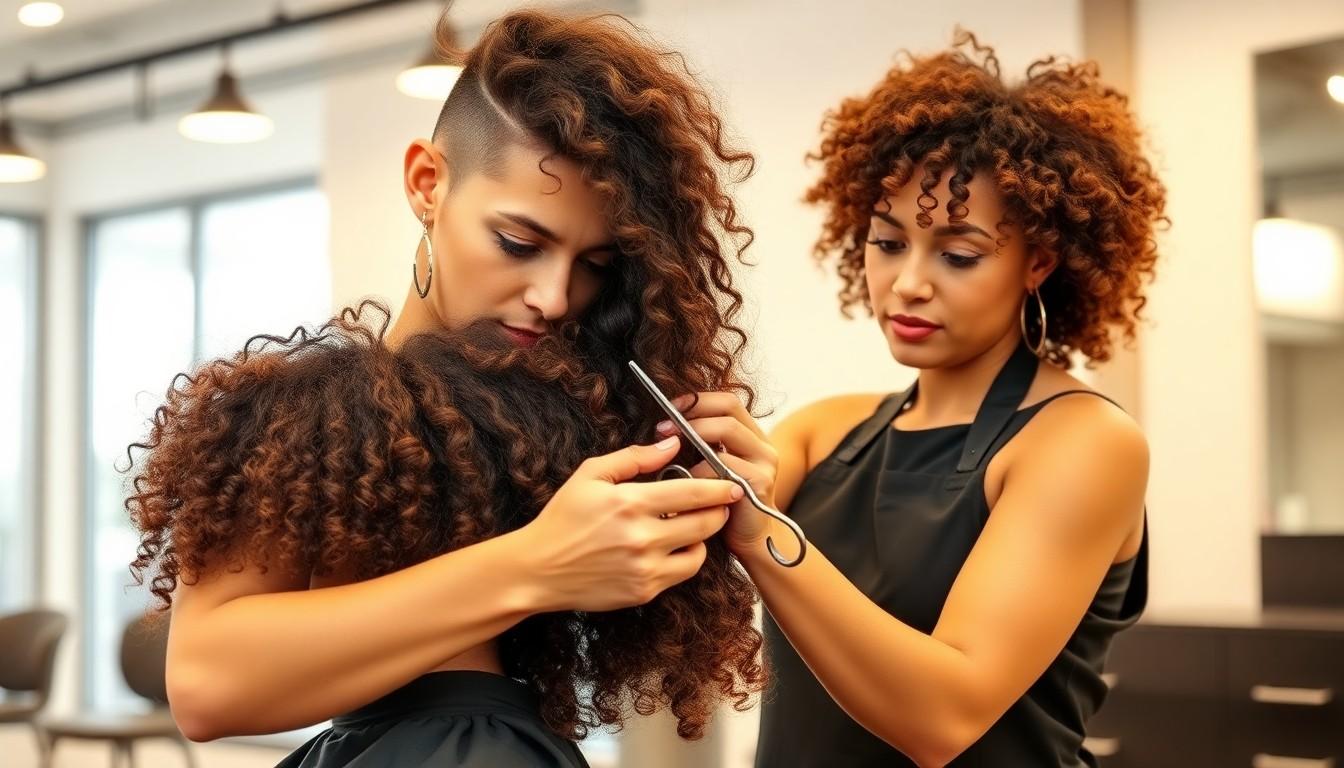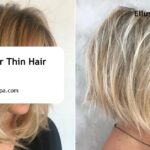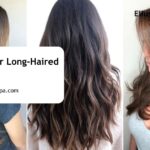Curly hair isn’t just a hairstyle—it’s a lifestyle that millions embrace worldwide. From bouncy ringlets to tight coils, curly locks bring personality and dimension that straight-haired folks often envy. Yet managing those beautiful curls can sometimes feel like handling a labyrinth without a map.
We’ve spent years researching the best techniques to care for curly hair and discovered that understanding your curl pattern is the foundation of proper maintenance. Whether you’re dealing with waves, spirals, or zigzags, the right products and routines can transform your relationship with your curls. Many of us have struggled with frizz, dryness, and definition—but those challenges don’t have to define your curly hair journey.
10 Game-Changing Tips for Managing Curly Hair
- Know Your Curl Type
Understanding your exact curl pattern is the foundation of proper curly hair care. Various curl types exist, ranging from loose waves (2A-2C) to tight coils (4A-4C). Take time to identify whether you have wavy, curly, or coily hair, as each type requires different products and handling techniques. Many curl enthusiasts find that their hair contains multiple patterns, requiring a customized approach to address different sections.
- Ditch Regular Shampoo
Traditional shampoos containing sulfates strip natural oils from curly hair, leaving it dry and frizzy. Switch to sulfate-free cleansers or co-washing (conditioner washing) to maintain moisture balance. Cleansing curly hair 2-3 times per week is typically sufficient, as overcleaning can disturb your curl pattern and natural oil production.
- Deep Condition Regularly
Curly hair craves moisture, making deep conditioning treatments essential for healthy locks. Apply a rich, curl-exact deep conditioner weekly, focusing on the mid-lengths and ends. For maximum benefits, cover your hair with a shower cap and apply gentle heat for 15-30 minutes to enhance product penetration and moisture retention.
- Master the Drying Technique
How you dry your curls significantly impacts their definition and frizz level. Swap terrycloth towels for microfiber towels or cotton t-shirts to gently blot excess water. Scrunching upward toward the scalp while drying encourages curl formation and reduces breakage. Air drying typically yields best results, though diffusing on low heat can work well for more volume.
- Apply Products to Soaking Wet Hair
Timing matters when it comes to product application. Distributing styling products through soaking wet hair helps lock in moisture and enhances curl definition. Start with a leave-in conditioner, followed by styling creams or gels, using the praying hands method to distribute product evenly before scrunching. This technique ensures better product absorption and more consistent curl patterns.
- Practice Protective Styling
Protecting your curls overnight prevents friction, breakage, and frizz. Pineappling (loosely gathering curls at the crown with a silk scrunchie) or using a satin bonnet preserves curl definition between wash days. Sleeping on a silk or satin pillowcase further reduces friction that can disrupt curl patterns and cause unnecessary tangles.
- Trim Regularly
Curly hair needs regular trimming to prevent split ends from traveling up the hair shaft. Schedule trims every 8-12 weeks to maintain shape and remove damaged ends. Finding a stylist specialized in curly hair cutting techniques, such as the Deva Cut or Rezo Cut, ensures your curls are shaped properly while dry to preserve their natural pattern.
- Embrace the LOC/LCO Method
The Liquid-Oil-Cream (LOC) or Liquid-Cream-Oil (LCO) method creates a moisture seal that curly hair desperately needs. Start with water or a water-based leave-in, follow with an oil to seal in moisture, then finish with a cream to define curls. This layering technique works particularly well for drier curl types, providing lasting hydration and definition between wash days.
- Detangle with Care
Proper detangling prevents breakage and preserves curl integrity. Always detangle when hair is wet and slippery with conditioner, starting from the ends and working up to the roots. Wide-tooth combs, detangling brushes, or your fingers serve as gentle tools for working through knots. Patience during this process prevents unnecessary damage and preserves your curl pattern.
- Clarify Monthly
Product buildup can weigh down curls and block moisture absorption over time. Using a clarifying shampoo or apple cider vinegar rinse once monthly removes residue and restores bounce to your curls. Following clarification with an extra-hydrating deep conditioning treatment replaces any moisture lost during the cleansing process and resets your curl pattern for optimal definition.
Understanding the Science Behind Curly Hair Patterns

Ever wondered why your hair curls the way it does? The science behind curly hair patterns is fascinating and helps explain why some of us have spirals while others have waves.
The Role of Hair Follicles
Hair follicle shape directly determines your curl pattern. Oval or twisted oval-shaped follicles produce curly hair, while perfectly round follicles create straight hair. These differently shaped follicles are genetically determined, explaining why curl patterns run in families. The curved contour of curly hair follicles, particularly at the bulb, creates an asymmetry that forces hair to emerge at an angle from the scalp rather than straight out.
Hair Fiber Structure
Curly hair fibers have a distinctly uneven shape compared to straight hair. These fibers contain “high spots” where the cuticle slightly lifts, making curly hair more vulnerable to damage and dehydration. The ellipticity of the hair fiber (its degree of flattening) directly correlates with how curly and fragile the hair is. This structural difference explains why curly hair often requires more moisture and gentle handling than straight hair.
Chemical Bonds
Disulfide bonds play a crucial role in forming your curls. These chemical connections bring hair strands closer together, contributing significantly to the curl shape. These bonds are also what hair relaxers and perms target when chemically altering curl patterns, either breaking or creating them to change the hair’s natural structure.
Identifying Your Curl Type
Finding your exact curl pattern helps you choose appropriate products and styling techniques. The L’Oréal Institute for Ethnic Hair and Skin Research developed a widely recognized classification system that categorizes hair into types 2-4, with higher numbers indicating curlier hair and tighter coils. This system measures the ratio between stretched hair length and its length at rest, along with counting waves and twists to determine curl type.
For practical identification at home, pluck a few strands of wet hair, lay them flat on a white surface, and observe their natural shape as they air-dry. Many people discover they have multiple curl patterns throughout their head, with hair often curlier at the crown and looser at the nape or around the face.
How Curl Patterns Form
Curl patterns form through the interaction between curved follicles and growing hair fibers. As hair grows, the curved follicle forces it to follow a curved path, creating natural curls or waves. The asymmetrical cellular distribution within these follicles further influences the curl’s direction and tightness.
Both mechanical and biochemical factors contribute to curl formation. The physical properties of hair fibers, including their elliptical shape and uneven cuticle structure, combine with chemical elements like disulfide bonds to create your unique curl pattern. Environmental factors, particularly humidity, can temporarily affect how curls behave, but they don’t change the intrinsic structure determined by your follicles.
Understanding these scientific principles helps explain why certain products work better for exact curl types and why some hair care practices are more effective than others for maintaining healthy curls.
Essential Products Every Curly-Haired Person Needs

Curly hair requires exact products to maintain its health, definition, and manageability. These essential items help address the unique needs of curly locks while improving their natural beauty.
Sulfate-Free Shampoos
Sulfate-free shampoos serve as the foundation of any effective curly hair routine. These gentle cleansers work by removing dirt and buildup without stripping away your hair’s natural oils. Regular use of sulfate-free formulas helps maintain your hair’s natural moisture balance, which is crucial since curly hair tends to be naturally drier than straight hair. Many curly-haired individuals notice immediate improvements in hair texture and reduced frizz after switching to sulfate-free options. Your curls will thank you for making this simple yet impactful change to your washing routine.
Deep Conditioning Treatments
Deep conditioning treatments deliver intensive moisture that curly hair craves on a regular basis. These powerful formulas penetrate the hair shaft to nourish from within, resulting in more defined and manageable curls. Products like the Banana Cream Deep Conditioner use natural ingredients such as banana extract to infuse hair with essential vitamins and minerals. The versatility of deep conditioners allows you to use them as either leave-in or rinse-out treatments depending on your hair’s exact needs. Regular deep conditioning sessions (weekly for most curl types) can transform dry, frizzy curls into soft, bouncy spirals that hold their shape throughout the day.
Curl-Improving Styling Products
Curl-improving styling products complete your curly hair arsenal with formulations designed to define, hydrate, and hold your natural pattern. Leave-in conditioners like Rice Pudding Leave-In by ecoslay use fermented rice water and marshmallow root to detangle while providing ongoing moisture between wash days. Curl creams work wonders for adding definition and softness to your locks, often serving as the perfect base layer in a multi-product styling routine. Gels such as Jello Shot Curl Defining Gel contain beneficial ingredients like okra extract and aloe vera that provide firm hold without the crunch or flaking of traditional styling products. Styling foams offer versatility for both wet and dry styling, creating volume and definition without weighing down your curls. The right combination of these products customized to your exact curl pattern can transform your hair from unmanageable to absolutely stunning with consistent use.
The Curly Girl Method: A Revolutionary Approach

The Curly Girl Method (CGM), developed by curly hair expert Lorraine Massey in 1999, has transformed how people care for their curls. This revolutionary approach focuses on improving natural curl patterns while promoting overall hair health through exact techniques and product choices.
Key Principles
- Understanding Hair Porosity: Knowing your hair’s porosity level helps determine the right protein balance needed for your exact curls.
- Eliminating Harsh Ingredients: Avoid products containing sulfates, silicones, and parabens as these strip natural oils and create buildup on curly hair.
- Customizing Product Selection: Choose a personalized routine with the right cleanser, conditioner, and styler based on your unique curl type.
Co-Washing Techniques
Co-washing forms the foundation of the Curly Girl Method and works wonders for curly hair that’s naturally prone to dryness. This technique involves using conditioner instead of shampoo to cleanse your hair while preserving essential natural oils.
To co-wash effectively, apply a specialized co-washing conditioner directly to your roots where oil accumulates most. Massage your scalp thoroughly with fingertips or a scalp brush for at least one full minute to lift away dirt and product residue. Flip your head upside down while rinsing to ensure the product cleanses the entire length of your hair. Follow with your regular conditioner to complete the cleansing process.
Many curlies find that co-washing helps maintain moisture balance, reduces frizz, and enhances natural curl definition that harsh shampoos often destroy. The gentle cleansing action works particularly well for tighter curl patterns that need maximum hydration.
Proper Drying Methods
Drying curly hair correctly maintains definition and minimizes frizz—two critical factors for showcasing beautiful curls.
Start by using plopping or scrunching techniques immediately after washing. Apply styling products to soaking wet hair, then gently cup and scrunch upward with a cotton T-shirt or microfiber towel to remove excess moisture without disrupting curl patterns. For plopping, place your hair atop a T-shirt, flip the fabric over your head, and secure it for 5-15 minutes to set curl formation.
Allow your hair to air-dry whenever possible, as this method preserves curl integrity and prevents heat damage. When pressed for time, use a diffuser attachment on low heat settings while keeping the dryer a safe distance from your hair. Resist touching your curls during the drying process since this introduces frizz and disrupts formation.
Once your hair dries completely, gently scrunch out any crunchy gel cast with dry hands. This final step releases soft, defined curls while maintaining the hold and protection provided by your styling products.
Common Mistakes That Damage Curly Hair

Handling curly hair care can be tricky, and even the most well-intentioned practices might be causing damage. Let’s explore some common mistakes that could be sabotaging your curls.
Heat Styling Pitfalls
Excessive heat styling ranks as one of the most damaging practices for curly hair. Regular use of flat irons, curling irons, and blow dryers strips your hair of its natural moisture, leading to frizz, brittleness, and breakage. The intense heat compromises your curls’ integrity, causing long-term damage that’s difficult to reverse. If you absolutely must use heat tools, always apply a heat protectant spray first to create a protective barrier between your precious curls and the damaging heat.
Brushing When Dry
Brushing curly hair when it’s dry or even partially dry is a major curl catastrophe. This common mistake breaks up your natural curl pattern, creates excessive frizz, and causes important breakage. Instead, reserve all detangling for immediately after conditioning while your hair remains soaking wet. Using a wide-tooth comb or simply your fingers proves most effective for gently working through tangles without disrupting your curl formation. Proper detangling techniques prevent unnecessary damage and help maintain your curls’ natural definition.
Also, using regular brushes or fine-tooth combs on curly hair typically leads to disaster. Over-cleansing your curls by washing too frequently strips away essential natural oils, resulting in dryness and frizz. Finding the right balance with gentle, sulfate-free products helps maintain your hair’s natural moisture balance. Remember that curly hair is naturally drier than straight hair, so skipping hydration treatments can lead to brittleness and breakage that undermines your curl pattern’s beauty.
Protecting Curly Hair While You Sleep

Nighttime care is crucial for maintaining healthy, defined curls. The right sleep habits can prevent damage, reduce frizz, and help you wake up with refreshed curls rather than a tangled mess.
Silk Pillowcase Benefits
Silk pillowcases offer exceptional protection for curly hair during sleep. These luxurious sleep surfaces don’t absorb your hair’s natural oils, keeping curls moisturized and preventing dryness that often plagues curly hair. The smooth texture creates minimal friction against your strands, significantly reducing the formation of tangles, breakage, and unwanted frizz that cotton pillowcases often cause. Beyond hair benefits, silk pillowcases contribute to better skin health by not absorbing facial oils and potentially reducing wrinkles over time. Many curly hair specialists recommend silk pillowcases as an essential investment for maintaining curl definition overnight without requiring extensive restyling in the morning.
Pineapple Method Explained
The pineapple method stands as one of the most effective techniques for protecting longer curly hair while sleeping. This simple approach involves gathering all your curls loosely at the very top of your head, creating what resembles a pineapple shape. Secure this high, loose bun with a non-snag hair tie or silk scrunchie to prevent creasing and breakage throughout the night. The method’s genius lies in its ability to minimize manipulation and reduce tension on hair strands, allowing curls to maintain their natural shape and moisture levels overnight. For additional protection, we recommend combining the pineapple method with a silk bonnet or scarf to completely shield your curls from friction. Many curly-haired individuals find that this technique significantly reduces morning styling time and preserves definition from day to day.
Beyond pillowcases and pineappling, additional protective measures include using silk or satin bonnets that completely encase your curls, wrapping hair in a silk scarf for full coverage, and replacing regular hair ties with gentle silk scrunchies that won’t create harsh lines or breakage. Protective styling methods prove particularly valuable for preserving curl definition and minimizing the need for heat styling or excessive product application in the morning.
Seasonal Care Tips for Curly Hair

Curly hair requires different care approaches throughout the year as weather conditions change. We’ve compiled essential strategies to help you maintain healthy curls regardless of the season.
Summer Protection Strategies
Summer presents unique challenges for curly hair with its high humidity, intense sun exposure, and heat that can trigger frizz and dryness. Deep hydration becomes essential during these months, so we recommend using hydrating shampoos and conditioners to maintain moisture levels. Weekly deep conditioning treatments work wonders to replenish lost moisture and prevent damage from environmental factors.
UV protection is non-negotiable for summer curl care. Invest in quality hair products containing UV filters or simply wear a stylish hat when spending extended time outdoors to shield your curls from harmful sun rays.
Lighter styling products perform better in summer humidity as they won’t weigh down your curls while still providing the hold and definition you need. Anti-frizz products become your best allies during this season, helping to combat the effects of increased humidity that can wreak havoc on curl definition.
Air-drying or using a diffuser attachment offers gentler alternatives to heat styling during summer months. These techniques preserve your natural curl pattern while reducing potential heat damage when temperatures are already working against your hair’s moisture balance.
Winter Moisture Retention
Winter weather creates the perfect storm for dry, brittle curls due to cold outdoor air and moisture-stripping indoor heating. Deep conditioning becomes even more crucial during colder months—perform treatments at least once weekly using products with rich ingredients like shea butter, argan oil, or coconut oil for maximum hydration.
Rich, emollient conditioners should replace lighter summer formulas to combat winter dryness. Adding hair oils or serums to your routine helps lock in precious moisture when the environment is working against your curls. Heat styling should be minimized in winter even though the temptation to use hot tools more frequently, as this can compound the drying effects already challenging your hair.
Protective sleeping habits are vital for winter curl care. Use a satin or silk scarf, bonnet, or pillowcase while sleeping to prevent moisture loss and reduce breakage caused by friction against cotton bedding.
Sealing techniques become particularly important during colder months. After moisturizing your curls, apply hair butters or oils as final steps in your routine to create a protective barrier that locks hydration inside the hair shaft, keeping your curls bouncy and defined even though harsh winter conditions.
Curly Hair Cutting Techniques That Actually Work

Finding the right cutting technique for curly hair can transform your entire hair experience. Let’s explore four highly effective methods developed specifically for improving natural curls.
DevaCut
DevaCut revolutionized curly hair styling when Lorraine Massey introduced it in 1994. This groundbreaking technique involves cutting hair while it’s completely dry, allowing stylists to see exactly how each curl naturally falls. Cutting curls in their natural state provides more predictable results since wet hair doesn’t accurately represent how curls will behave when dry. DevaCut works wonderfully for all curl types—from loose waves to tight coils—and can even be adapted for straight hair when applied correctly. Many curly-haired clients appreciate this method’s ability to enhance their natural curl pattern rather than fighting against it.
Curlsys
Curlsys offers a unique approach to cutting curly hair by focusing on wet cutting with specialized tools. This technique pays particular attention to cutting individual curls so that hairs within each curl formation stick together at the ends for better definition. Stylists use specially designed curved scissors to follow the natural curve of each curl, creating more cohesive curl clumps. The result is beautifully defined curls that maintain their shape and bounce even as they grow out.
CC1 Technique
Introduced in 2019, the CC1 Technique (Curl Cutting Technique) begins with properly washing and preparing the hair before cutting it in its wet state. Stylists cut the hair vertically to create volume and movement within the curl pattern, ensuring uniform length throughout. This versatile technique particularly benefits those who alternate between wearing their natural curls and occasionally straightening their hair. The method creates a cut that looks balanced and intentional in both curly and straight styles.
RëzoCut
Developed by curl expert Nubia Suarez, the RëzoCut enhances natural texture while providing exceptional volume and shape. This dry-cutting technique uses a unique circular pattern to blend different textures throughout the hair, achieving the perfect amount of volume and movement. Stylists typically cut the hair down the middle first, ensuring an even and balanced result. The RëzoCut specifically targets improving your natural curl pattern rather than trying to change it.
Finding a Curl-Specialized Stylist
Locating a stylist who truly understands curly hair requires some research and preparation. Always look for professionals who have completed specialized training through reputable curl education programs like DEVACurl, Ouidad, Aveda, or Goldwell, as these certifications indicate the stylist has invested time in understanding curly hair’s unique needs. Reading online reviews from clients with similar curl patterns can provide valuable insights into a stylist’s expertise and consistency. We recommend scheduling a consultation before committing to a cut, allowing you to discuss your hair goals and assess whether the stylist truly understands your exact curl type and texture.
The Deva Cut Explained
The DevaCut stands out as a groundbreaking experience for people with curly, wavy, or coily hair. This technique involves cutting each curl individually while the hair remains completely dry, allowing the stylist to see exactly how your curls naturally fall and behave. Stylists trained in this method create customized cuts customized specifically to your unique curl pattern and texture, improving what nature gave you rather than fighting against it. No tension is applied during cutting, preserving the natural shape and spring of each curl. The versatility of this approach means it can be adapted for various curl types from 2A waves to 4C coils, always respecting the hair’s natural tendencies. Many clients report that switching to DevaCut has dramatically reduced their styling time and improved their curl definition.
Embracing Your Natural Curls: Confidence Building

Learning to love your natural curls is a powerful journey toward self-acceptance and confidence. Many curly-haired individuals have transformed their relationship with their hair from struggle to celebration, discovering that their unique texture is actually their greatest beauty asset.
Overcoming Curl Discrimination
Curl discrimination remains a real challenge that many face on their natural hair journey. Historical and cultural biases often create environments where straight hair is deemed more professional or attractive, leaving those with curls feeling pressured to conform. Family members sometimes unknowingly perpetuate these harmful standards by referring to natural curly hair as a “mess” when not straightened. Media representations and beauty standards have traditionally favored straight hair textures, leading many curly-haired individuals to internalize negative perceptions about their natural texture. Breaking free from these limiting beliefs requires actively challenging these standards and embracing a more inclusive definition of beauty that celebrates all hair textures equally.
Celebrating Curl Diversity
Curl diversity represents the beautiful spectrum of textures that make each person’s hair journey unique. Recognizing the strength and beauty of your natural curls isn’t just about aesthetics—it’s a powerful statement of your individual identity. Community support plays a crucial role in the curl acceptance journey, with social media platforms like TikTok becoming valuable resources for learning styling techniques that enhance natural texture. Embracing your curls can also connect you with your genetic and cultural heritage, as curly hair often reflects diverse backgrounds such as Sephardi Jewish ancestry. Teaching children to develop personal autonomy around their hair choices from an early age helps build lasting confidence and self-acceptance. Sharing personal experiences of transitioning from resenting curly hair to loving it creates a supportive environment where others can find inspiration for their own curl journey.
Conclusion: Loving Your Curly Hair Journey
Embracing your curls is truly a journey worth taking. From understanding the science behind your unique curl pattern to selecting the right products and techniques that work for you there’s so much to discover.
We’ve seen how proper care routines seasonal adjustments and specialized cutting methods can transform your relationship with your curls. Remember that your curly hair isn’t just hair—it’s an expression of identity and individuality.
Whether you’re just starting to explore the Curly Girl Method or you’re a seasoned curl enthusiast know that the path to healthy beautiful curls takes time patience and self-acceptance. Your curls deserve to be celebrated not just managed.
Let’s continue to challenge beauty standards build supportive communities and love our curls for exactly what they are—wonderfully unique just like us.
Frequently Asked Questions
How do I determine my curl type?
Identify your curl pattern by observing your hair’s shape when wet and dry. Look for characteristics like tight coils, loose waves, or springy ringlets. Compare with curl type charts (2A-4C) online. Consider factors like strand thickness and density. Your curl pattern might vary in different sections of your head, which is completely normal.
What’s the best way to wash curly hair?
Use sulfate-free cleansers instead of regular shampoos, which strip natural oils. Co-wash (conditioning wash) between cleansing days to maintain moisture. Apply products to your scalp using fingertips, not nails. Rinse thoroughly with lukewarm water, as hot water can cause frizz. Wash your hair 2-3 times a week maximum, depending on your hair’s needs.
How can I prevent frizz in curly hair?
Prevent frizz by applying products to soaking wet hair and avoid touching your curls while they dry. Use microfiber towels instead of regular terry cloth. Sleep on silk or satin pillowcases to reduce friction. Apply leave-in conditioner and seal with oils or butters using the LOC/LCO method. Consider weather conditions and adjust products accordingly for humidity control.
What is the Curly Girl Method?
The Curly Girl Method (CGM) is a haircare approach developed by Lorraine Massey that eliminates harsh ingredients like sulfates, silicones, and alcohols. It promotes co-washing, deep conditioning, and styling techniques that enhance natural curl patterns. CGM emphasizes moisture retention, gentle detangling, and avoiding heat styling and brushing dry hair. It’s customizable based on your specific curl type and hair needs.
How often should curly hair be trimmed?
Curly hair should be trimmed every 3-4 months to prevent split ends from traveling up the hair shaft. Regular trims maintain shape, remove damaged ends, and promote healthier growth. Consider specialized curl cutting techniques like DevaCut or RëzoCut performed by stylists trained in curly hair methods. Dustings (minor trims) can be done between major cuts to maintain hair health.
What products are essential for curly hair care?
Essential products include sulfate-free cleanser, moisturizing conditioner, deep conditioning treatment, leave-in conditioner, curl cream or defining product, and styling gel or mousse. Consider adding hair oil for sealing moisture and occasional clarifying shampoo to remove buildup. Product needs vary by curl type—tighter curls typically require more moisturizing products while looser patterns may need lighter formulations.
How should I dry curly hair to maintain definition?
Gently squeeze excess water with microfiber towels or t-shirts—never rub. Apply styling products to soaking wet hair, then “plop” with a t-shirt or microfiber towel for 10-20 minutes to set curl pattern. Diffuse on low heat/speed or air dry without touching. Use “hover diffusing” to minimize disruption. Avoid traditional blow drying, which creates frizz and disrupts curl formation.
How can I protect curly hair while sleeping?
Use a silk or satin pillowcase to reduce friction. For longer hair, try the “pineapple method”—gathering hair loosely at the crown with a silk scrunchie. Consider wearing a silk bonnet or scarf for added protection. Shorter curls benefit from using a silk scarf wrapped around the head. These techniques help maintain definition and reduce morning styling time.
Why is my curly hair always dry?
Curly hair is naturally drier because oils from the scalp can’t travel down twisted hair shafts easily. Porosity issues, heat damage, chemical processing, and harsh products can worsen dryness. Weather conditions, particularly low humidity and cold temperatures, extract moisture. Combat dryness with regular deep conditioning, leave-in products, and the LOC/LCO moisture-sealing method. Avoid sulfates and frequent washing.
How do I detangle curly hair without damage?
Always detangle wet hair with conditioner for slip. Start from ends and work up to roots using wide-tooth combs, detangling brushes designed for curls, or your fingers. Section hair for thorough detangling. Never brush dry curly hair. Use detangling sprays or conditioners for stubborn knots. Be patient and gentle to minimize breakage and preserve your curl pattern.







